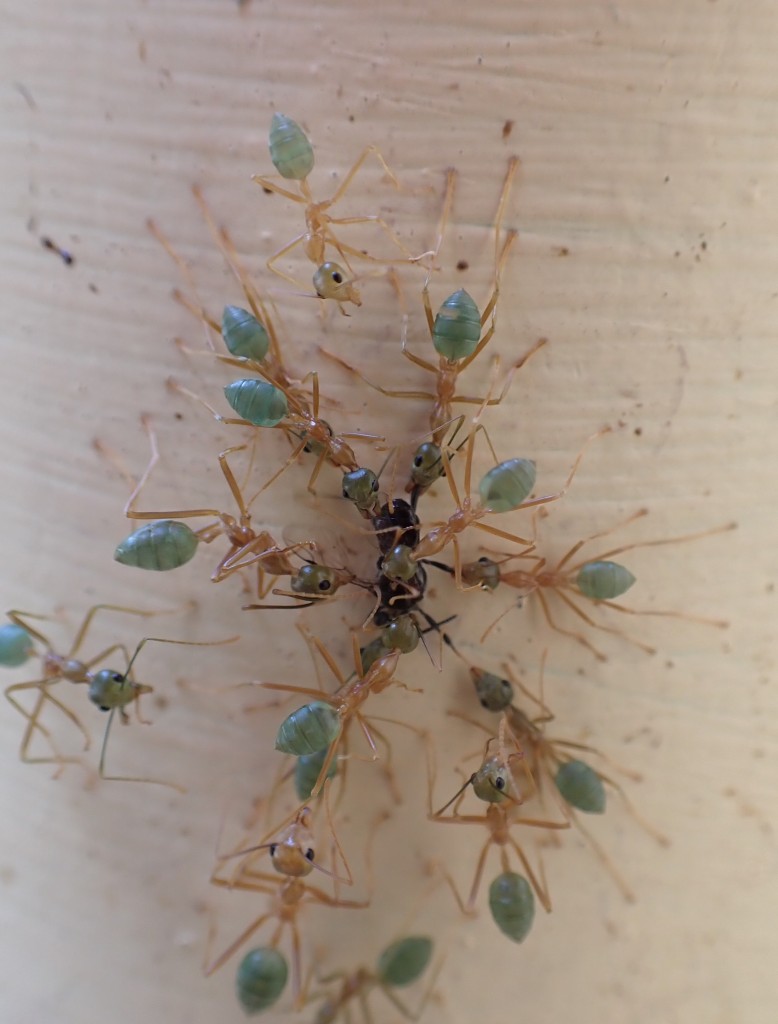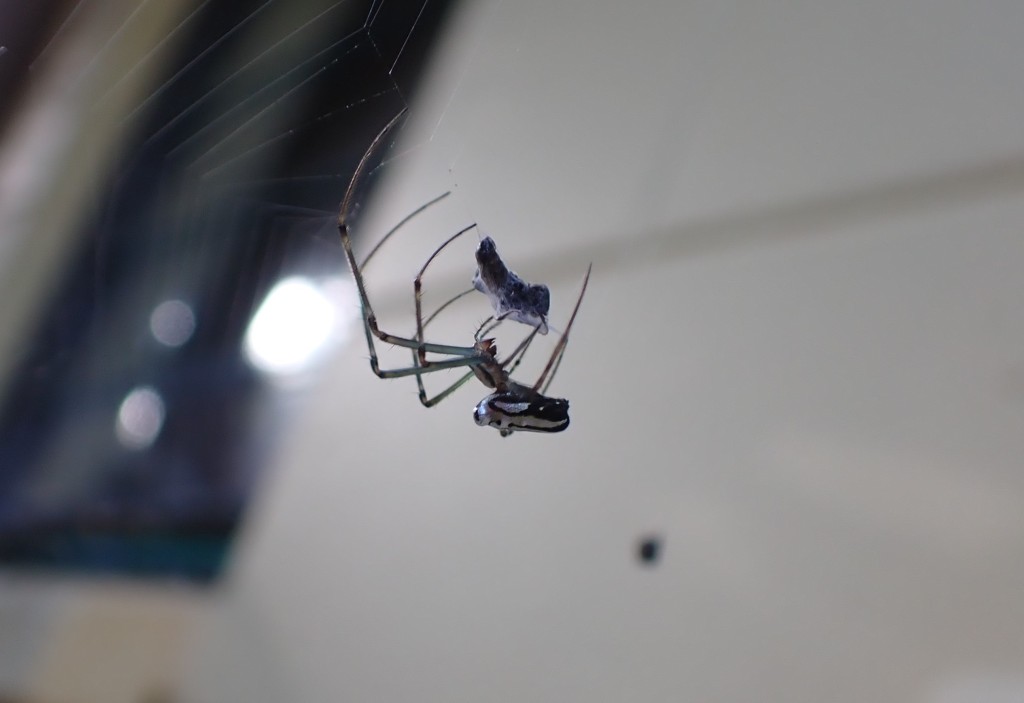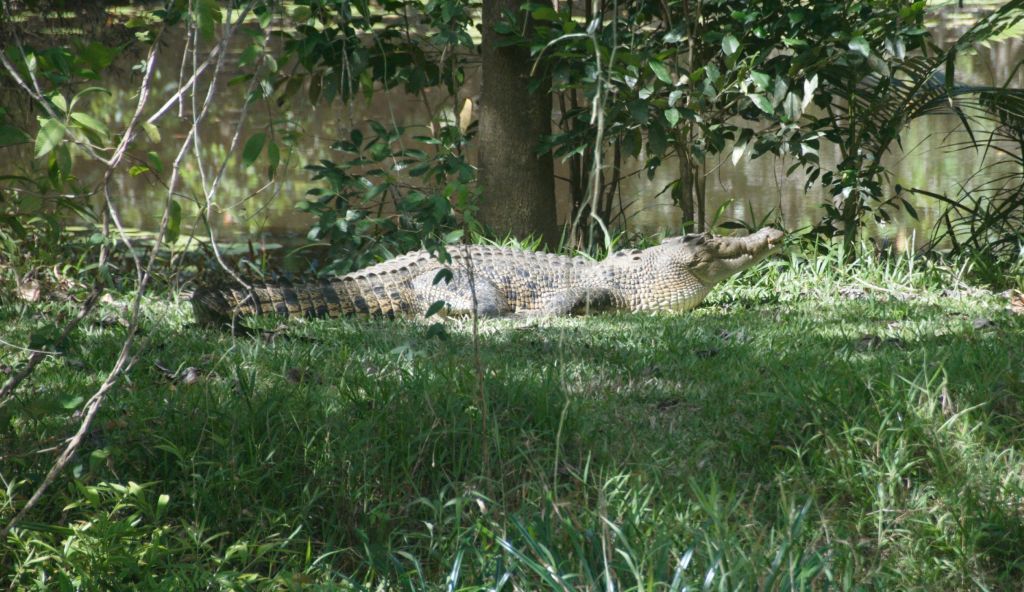During a quiet read after lunch I was vaguely aware of a scrabbling sound coming from the other end of the house. Being deeply engrossed in my book it took quite a few seconds to realize that it couldn’t be a branch scraping against the house as we keep our house clear of vegetation. As I went to investigate I met a youngish Lace Monitor coming along the passageway. I spoke to it in a quiet voice suggesting it would be best if it returned from whence it came and so it turned around heading back into the guest room. As it had been a fresh breezy day I had earlier opened the sliding glass door, leaving the screen door in place but it’s a bit loose in its track and easily pushed to one side – I imagine that entry was gained by accident but who knows?
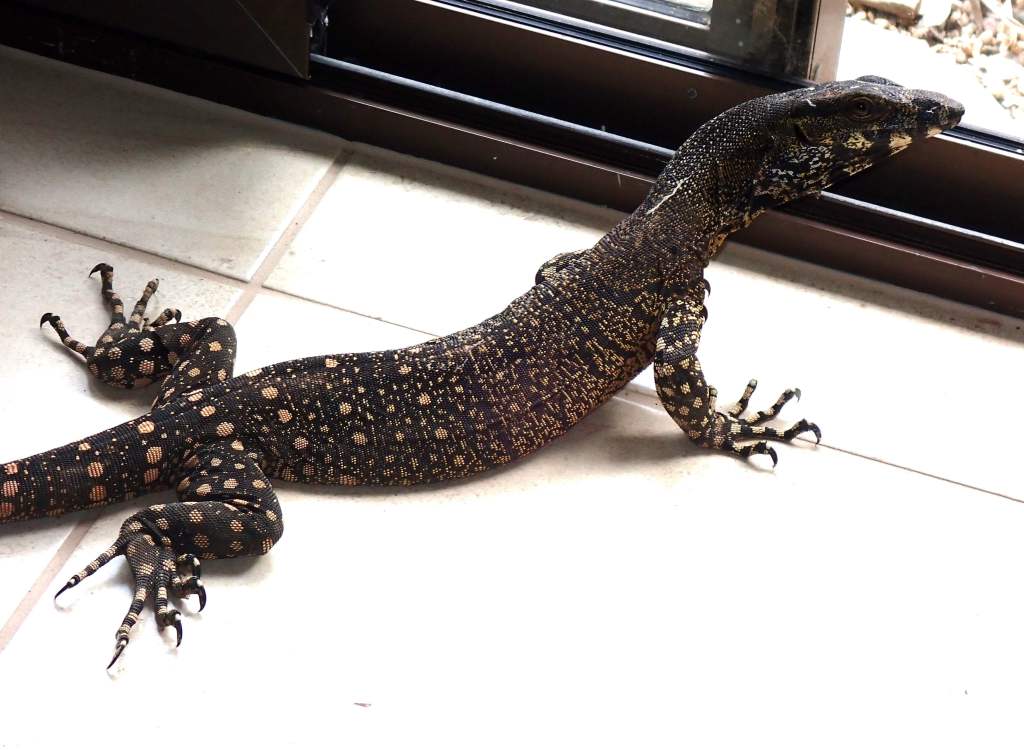
I took this photo while lying across the bed so I could get into a suitable position without being too close. I didn’t want to cause panic as I had no wish to find out what those claws would do to my skin! I was simply delighted at such a close encounter – it didn’t take very long for the monitor to see the opening and so my unexpected guest was soon back into the safety of the garden.
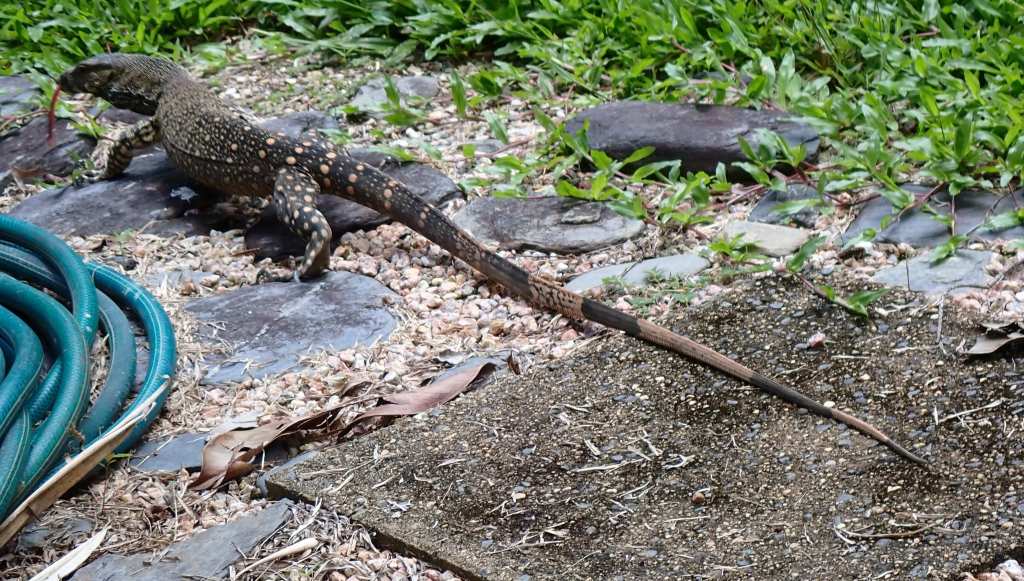
Last October we had a much smaller version of the above which I think gained access through ill-fitting louvres. As we often have skinks coming into the house at first I presumed the movement in my peripheral vision was that of a skink but the moment I looked properly it was obvious it was a very young monitor. Luckily I managed to catch it quite quickly as trying to move across the tiled floor was making it panic.

We also have unexpected appearances from plants which have quietly established themselves and then announce their presence with some lovely flowers. I noticed these flowers when I was working on weed eradication nearby so I took some time to enjoy them.


